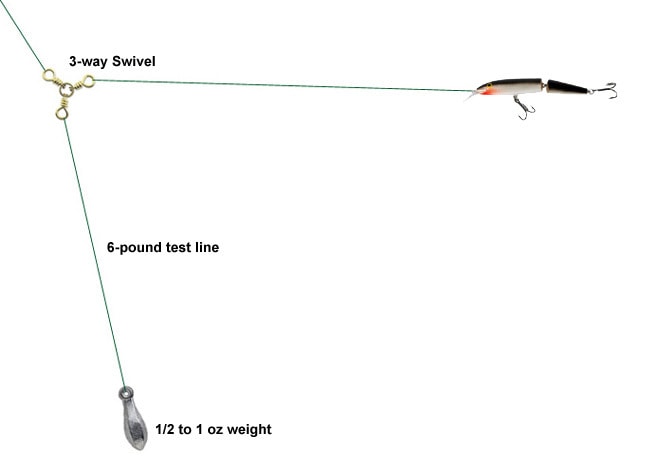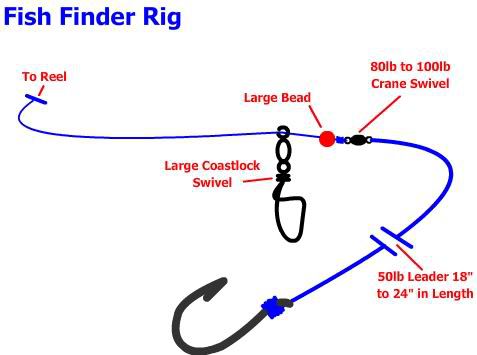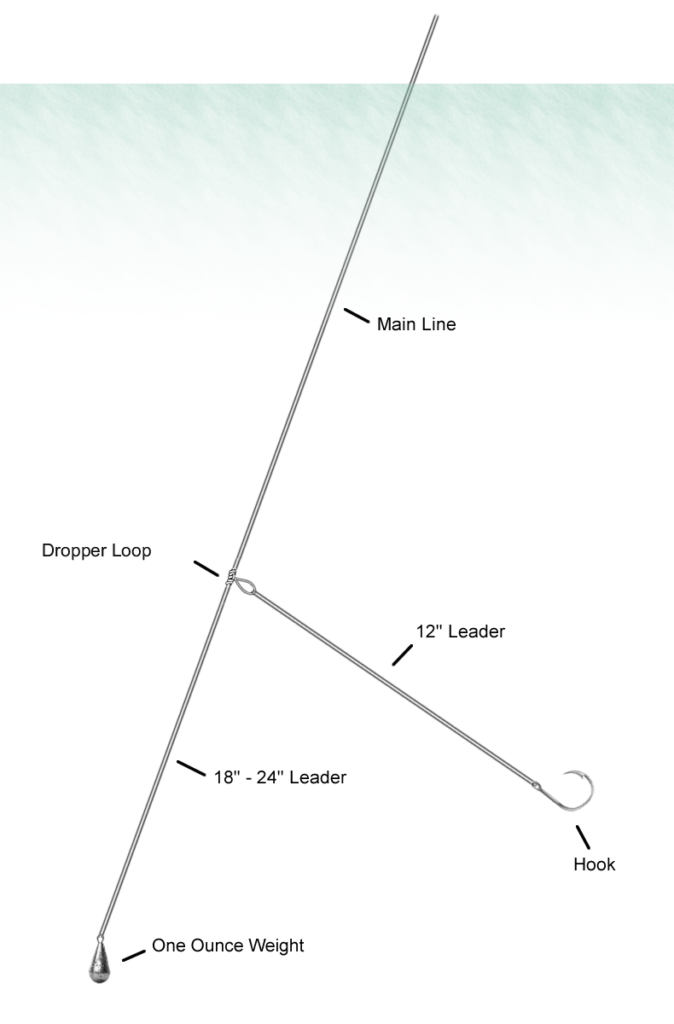Table of Contents
The Basics of Bottom Fishing
It’s important to have a good understanding of the seafloor, various depths, your targeted fish, and of course, your gear.
When it comes to your gear, you should fully understand that the quality of the rig you’re planning to drop in the seafloor has everything to do with your success. In other words, you’ll only maximize your chances of catching a bottom fish if you have quality tackle, faultless knots, and first-class leader material. This is because most bottom fish are big, strong, aggressive, mean, and relentless and will likely fight your tackle to the limits. So whether you have the best rod and reel in the market, you’ll be wasting your time and will most definitely head back home empty-handed if you don’t use a resolute bottom rig.
You also have to remember that the seafloor is generally covered in weeds and jagged rocks. So you have to make it count if you’ll be dropping this deep. Believe it or not, reeling up an empty hook and sinker from the floor takes a lot of time and energy. So even if you get a bite on the line, keeping the fish on the line is a different ballgame that requires you to handle your gear tactically. This is to ensure that the fish do not run off with your line and get it stuck in underwater foliage or snag it on rocks.
Tackle for Bottom Fishing
Bottom fishing involves targeting some of the biggest, meanest, and most aggressive predatory fish such as the grouper, snapper, catfish, halibut, bream, suckerfish, and amberjack. You, therefore, must leave your light tackle at home and use heavier tackle. In most cases, you won’t know what might be at the end of the line so you need a heavy-duty rod that can perfectly handle a 100-pound fish. Again, the run is generally long when bottom fishing and so you must keep your drag locked at all times so that you don’t give a hooked fish an inch of a chance.
The basic components of bottom fishing include hooks, swivels, leaders, and weights. In terms of the hooks, the best hooks for bottom fishing should be complete circle hooks. The points must be positioned at 90 degrees to the shank as this intensely improves hookups. That being said, you should choose strong circle hooks with a wide gap (2 to 3 times larger than a normal J hook).
Given the importance of a leader in bottom fishing, you should spare no expenses. That’s why you should refrain from those cheap monofilament lines. Instead, invest in a high-quality fluorocarbon line that’s more durable and stiff so that you avoid numerous tangles while dropping your line. The leader must also be heavy with a minimum of 125-pound test. More importantly, make sure that the leader is free from abrasions and nicks since it can be shameful to drop the line that deep, get a bite only to lose the catch just because you used a low-quality leader.
Swivels are another important part of bottom fishing. You shouldn’t use a low-quality swivel, which will give way under extreme pressure. As such, you should go for a high-quality swivel such as a barrel and clasp in 60 lb., 80 lb. or 130 lb. class. The leader weight is also a must as it helps in casting the bait to the seafloor and also to ensure that the hook and the bait stay put even when there are high waves and strong currents.
Bottom Fishing Lures
When it comes to bottom fishing, live lures are always very effective as they can easily entice your targeted fish. A good bet can be blue runners and pinfish. You should, however, study the area and go with the prey fish swimming in the area because that’s essentially what your targeted fish will focus on.
In terms of artificial lures, darter jigs can be a good bet but you can also experiment with several jigs and lures until you figure out what works best. Keep in mind that an artificial lure can be of great importance in the sense that the fight will be on once the fish is hooked. This, of course, ups your chances of keeping fish away from structures.
The Best Knot for Bottom Fishing
Choosing the right knot for bottom fishing can be quite challenging. And because you don’t want the fish to escape as a result of a failed knot, it’s important to choose the right knot. In most cases, the best knot for bottom fishing is the Albright Special knot. Here’s how to tie it correctly.
Step 1: Go with 13 to 15 wraps of braid around a doubled mono. Make sure that the tag end passes through the end twice.
Step 2: Wrap the leader around your shoes three times. Wrap the mainline around a screwdriver handle at least eight times and hold it in one hand. Wrap the tag end around another screwdriver handle eight times and hold it on the other hand.
Step 3: Stabilize the leader with your foot before pulling interchangeably the running line and the tag end while gradually tightening both of them at least three times.
Types of Bottom Fishing Rigs
Here are some of the best bottom fishing rigs you can use.
Three-Way Swivel Rig

Originally Posted on Fishing Sun
This is a perfect method if you have large live baits. You should use a light line (15’ to 20’ of fluorocarbon) to reduce friction but keep in mind that the line should be excessively long. You should tie 2.5-foot pieces of line to the 3-way swivel; one for the weight, another one for the lure, and the last one for the mainline. You can choose to use a longer leader line as it works best when the currents are strong and will keep the weight away from the bait. When using this method, you should drop it slowly so that the bait trails behind the rig and does not spin.
Florida Rig/ In-Line Snapper Rig/ The Fish Finder Rig

Originally Posted on Fishing Sun
Commonly used for snappers, it can still be effective for groupers. The main aim is to let the fish bite without feeling the resistance of the weight. The weight will be farther from the hook all the time and the bait will move freely with the current and away from the weight.
Knocker Rig

Originally Posted on Fishing Sun
Perfect for targeting small snappers, this is your best choice if you’ll be targeting areas with lots of reefs or close to wrecks. The leader should be short to prevent the fish from diving back. You should also have a quick reaction so that the fish do not move your line behind the reefs, rocks or wrecks.
The leader will slide when the fish bites and the circle hook will set in properly on the fish. You should be quick to tighten the line and keep constant pressure on the fish.
Deep Drop & Chicken Rigs

Originally Posted on Fishing Sun
This is the perfect method if you do not want tangles, which may reduce your chances of catching fish. You should connect the dropper rig to the mainline through a swivel snap.
When You Get a Bite
Here’s what you should do when you get a bite.
– Keep your fishing rod facing down to ensure that you’re aware of what’s happening at the bottom
– Bring the rod straight up, turn the reel once or twice and hold it there so that you keep the pressure on the fish
– The fish will most likely jolt for a few seconds before pausing. Get as much line on the reel as possible and pull the fish at least 12 feet off the bottom. At this point, it should be game over for the fish. Just don’t allow it to take any line unless it earns it.
Bottom Fishing Tips
– Use long leaders to increase the bites for bottom fish
– Use the ball anchor for retrieval or to help in pulling off the anchor from the bottom and for buoyancy
– If you’re targeting red snapper, cut the weight since they generally don’t swim deeper.
– It’s not a race so just drop it slowly
– Make sure that you don’t leave your footprint when bottom fishing
– Don’t overcrowd or over-fish near a wreck. 100 or 200 yards from the wreck is better.
– Make sure that you properly position your boat. Don’t be more than 10 feet away from your target area.
– Use bright lures to increase your success chances
Conclusion
To this end, it’s easy to see why bottom fishing is a popular fishing technique. In its purest form, it involves lowering a weighted hook to the bottom with baits to attract fish to bite. You’ll, however, have to do it correctly, be patient, creative, and use high-quality tackle. You should also learn the behaviors of your targeted fish and have knowledge of the ocean floor. With that, you’ll most likely not head back home empty-handed.
Cheers to more catches!
Recent Articles
















